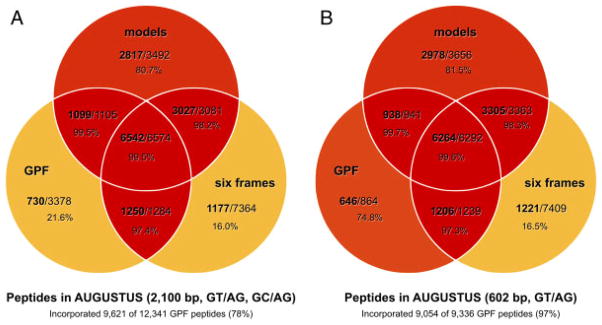Figure 6.
The effects of applying less stringent GPF search criteria and adding six-frame translated peptides to the list of candidate peptides. Venn diagrams depict the amount of peptides incorporated by AUGUSTUS in relation to peptides provided to AUGUSTUS, for each of three peptide candidate sources: JGI gene models v3.1, GPF peptides, and, in addition, the six-frame translation of the C. reinhardtii genome. (A) Less stringent GPF filtering criteria (max. intron length of 2100 base pairs, GT/AG and GC/AG introns) result in a low peptide incorporation rate for those peptide identified via GPF only (21.6%). In addition, peptides only identified via the six-frame translation show a similar, low incorporation rate of 16%. (B) More stringent GPF filtering criteria, as used in this study, lead to an increase of the incorporation rate of peptides identified via GPF only. Overall, the amount of GPF peptides incorporated by AUGUSTUS increases from 78 to 97%. On the other hand, the incorporation rate of unspliced peptides from the six-frame translation remains low as they are unaffected by the changes.

